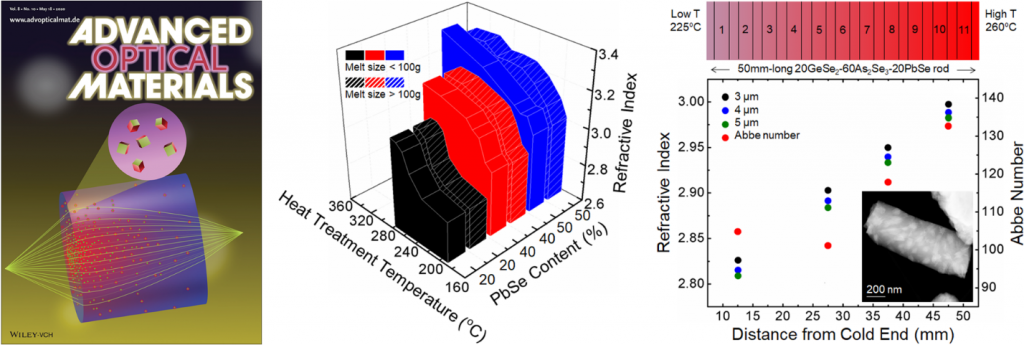In a new article “Monolithic Chalcogenide Optical Nanocomposites Enable Infrared System Innovation: Gradient Refractive Index (GRIN) Optics” published in Advanced Optical Materials, a collaborative team, led by Professor Kathleen A. Richardson (corresponding author) and Dr. Myungkoo Kang (lead author) from the College of Optics and Photonics, reported a first-ever integrated approach to the design-processing-structure-property-performance relationship enabling cutting-edge manufacturing capabilities for monolithic broadband infrared gradient refractive index chalcogenide glass-ceramic bulk nanocomposites. This approach has resulted in a new paradigm for designing and fabricating optical nanocomposites for the infrared spectral region, through spatially selective conversion of glass to a glass ceramic while maintaining key optical properties needed for component and device applications.
Specifically, the team has demonstrated a novel, cost-effective, and scalable thermal process to spatially modulate high refractive index nanocrystals within Ge-As-Pb-Se-based glass matrices, enabling predictive construction of universal processing maps towards the design of specific optical performance. A complete, mechanistic understanding of this composition-thermal protocol-index modification relationship and the resulting refractive index and dispersion tailorability as compared to other conventional optical materials is unprecedented within a singular, homogeneous starting material. Through this new paradigm in material modification, material can be exploited to dramatically enhance and expand optical design strategies now possible within an application-specific, uniquely designed optical nanocomposite.
The work by the UCF team and their partners has led to multiple articles and patents that define how the technology can be used in bulk, free space optics and in planar geometries for materials that span the broadband (SWIR, MWIR and LWIR) portions of the infrared spectrum.
The article has been highlighted as a cover art of the journal’s May 18 issue and also featured in Advanced Science News.
